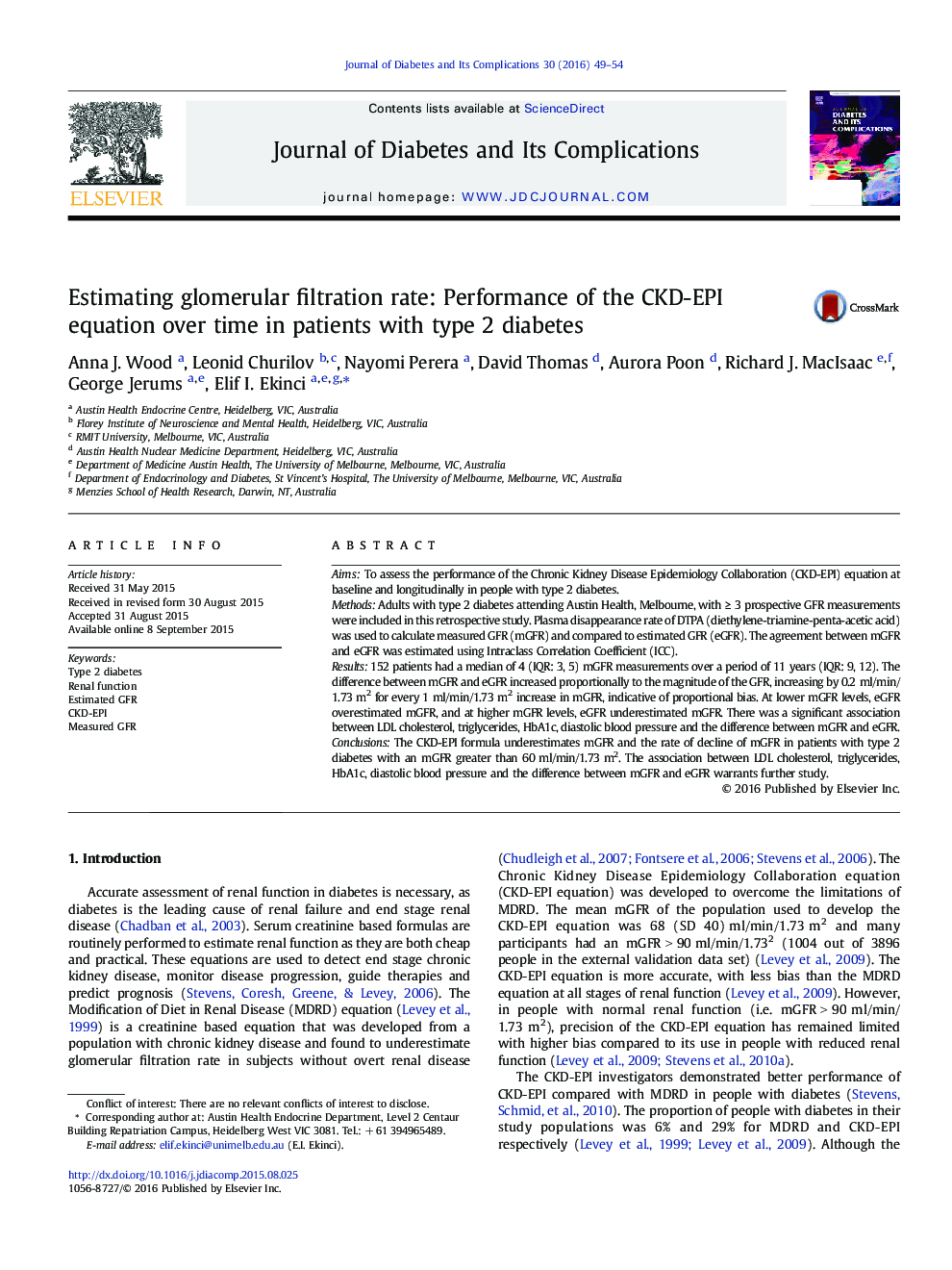| Article ID | Journal | Published Year | Pages | File Type |
|---|---|---|---|---|
| 2804146 | Journal of Diabetes and its Complications | 2016 | 6 Pages |
AimsTo assess the performance of the Chronic Kidney Disease Epidemiology Collaboration (CKD-EPI) equation at baseline and longitudinally in people with type 2 diabetes.MethodsAdults with type 2 diabetes attending Austin Health, Melbourne, with ≥ 3 prospective GFR measurements were included in this retrospective study. Plasma disappearance rate of DTPA (diethylene-triamine-penta-acetic acid) was used to calculate measured GFR (mGFR) and compared to estimated GFR (eGFR). The agreement between mGFR and eGFR was estimated using Intraclass Correlation Coefficient (ICC).Results152 patients had a median of 4 (IQR: 3, 5) mGFR measurements over a period of 11 years (IQR: 9, 12). The difference between mGFR and eGFR increased proportionally to the magnitude of the GFR, increasing by 0.2 ml/min/1.73 m2 for every 1 ml/min/1.73 m2 increase in mGFR, indicative of proportional bias. At lower mGFR levels, eGFR overestimated mGFR, and at higher mGFR levels, eGFR underestimated mGFR. There was a significant association between LDL cholesterol, triglycerides, HbA1c, diastolic blood pressure and the difference between mGFR and eGFR.ConclusionsThe CKD-EPI formula underestimates mGFR and the rate of decline of mGFR in patients with type 2 diabetes with an mGFR greater than 60 ml/min/1.73 m2. The association between LDL cholesterol, triglycerides, HbA1c, diastolic blood pressure and the difference between mGFR and eGFR warrants further study.
